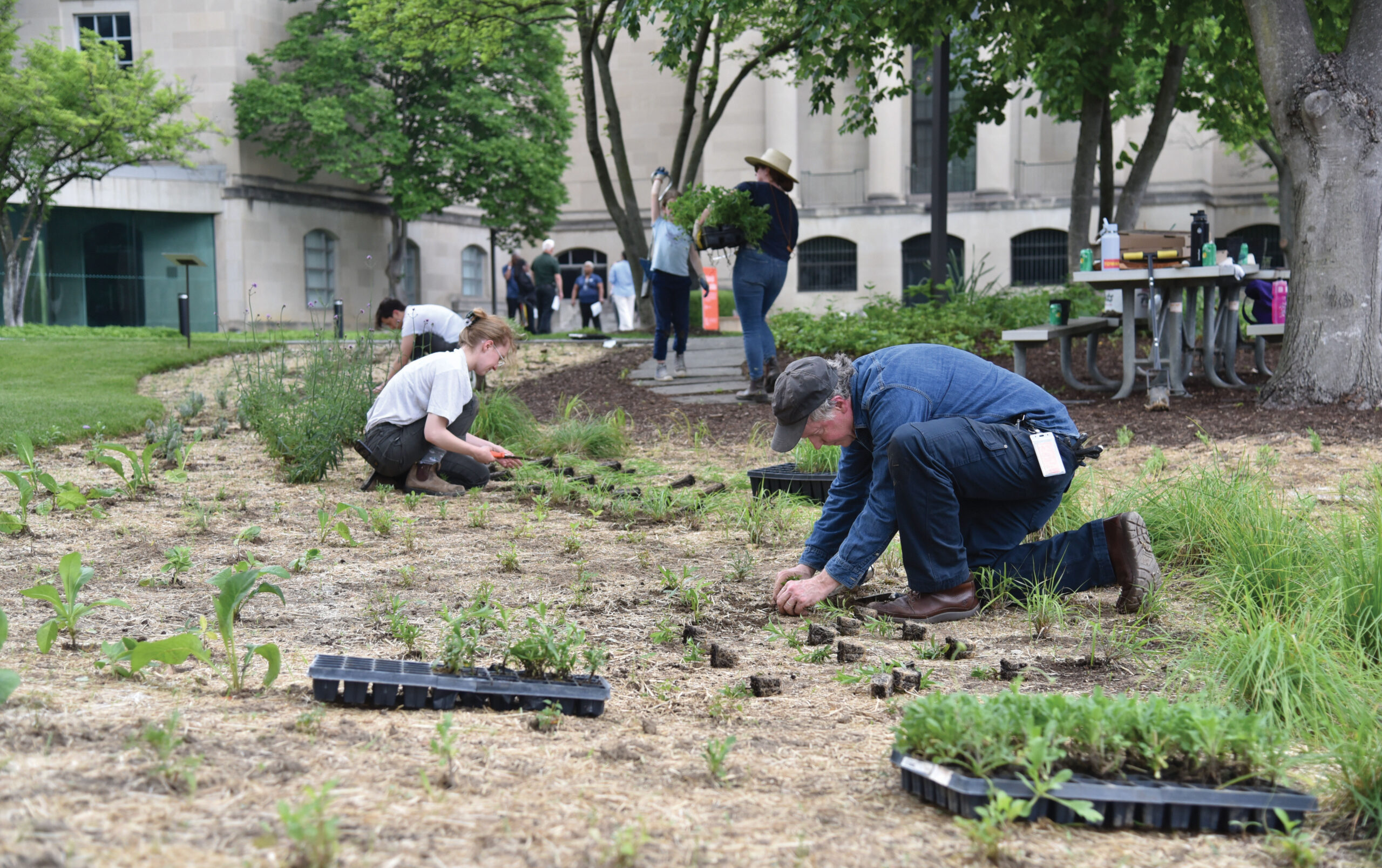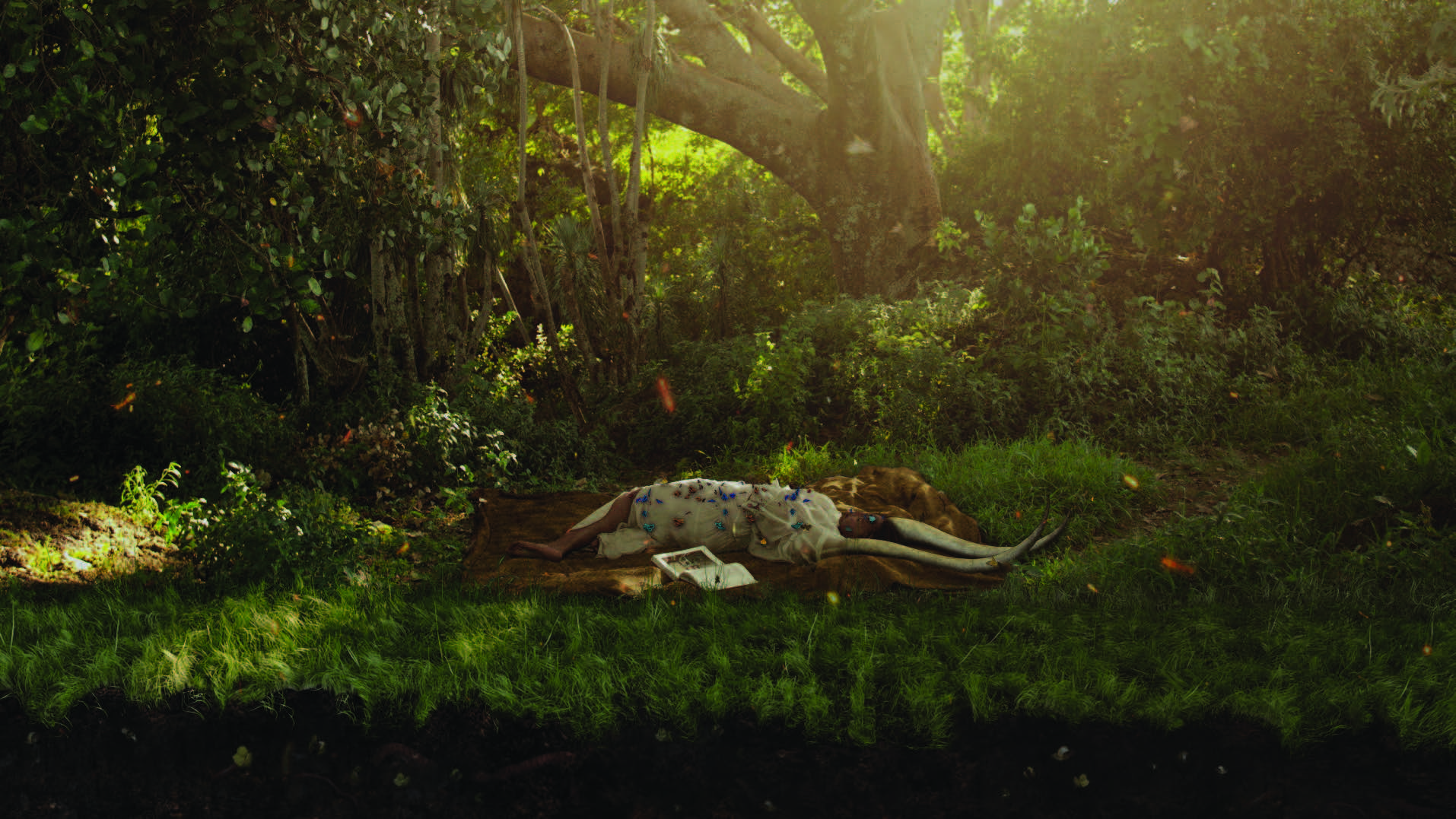
The BMA and more than 20 Maryland organizations take action for a greener future
In 2023, Governor Wes Moore announced the goal of achieving 100% clean energy in Maryland by 2035. To support this critical and ambitious target, the BMA established a citywide eco-challenge, inviting civic and cultural leaders throughout the Baltimore region to commit to making one sustainably driven operational change and developing one program to raise environmental awareness in 2025. To date, approximately 20 organizations have signed the pledge. The eco-challenge harnesses the expertise, voices, and resources of an extensive range of partners to spur real citywide action; these collective efforts resulted in the city’s tourism bureau, Visit Baltimore, naming 2025 the Year of Sustainability.
For its contributions to the eco-challenge, the BMA has been calling attention to the environment through its Turn Again to the Earth suite of exhibitions and installations. The BMA also has embraced a new sustainability plan that includes, among other efforts, reducing art shipments by 25% to decrease its carbon footprint; acquiring reusable crates; capping its construction projects to minimize waste from building materials; and digitizing content to eliminate paper waste.
The eco-challenge boasts many active partners that are making significant strides in their commitments to “green” their operations and programs. For example, among its many pledges, the Justice Thurgood Marshall Amenity Center is hosting exhibits and programs focused on climate change and environmental justice. It is also partnering with Johns Hopkins University, artists, academics, and public health professionals to develop artwork that raises awareness of extreme heat’s impact on Baltimore communities.
Port Discovery Children’s Museum is likewise dedicated to community-based efforts. The region’s preeminent children’s museum is updating the curriculum for its Wonders of Water exhibit to reflect a newly renovated Chesapeake Bay–themed display and converting its signature rooftop neon sign to energy-efficient lighting. The Walters Art Museum too is focusing on lighting: in May 2025, the Walters debuted its first permanent installation of Latin American art with LED lights incorporated into the gallery renovations. In addition, the museum’s free weekend drop-in art-making and monthly Make and Mingle programs use recycled or reused materials from SCRAP Bmore—reducing waste and supporting a local nonprofit at the same time.
To achieve its goal of net-zero greenhouse gas emissions by 2035, the National Aquarium has committed to several strategies. They include, among others, sourcing 40% of the institution’s electrical power from renewable sources; developing a strategy to electrify 70% of its vehicle fleet; saving more than 10 million gallons of water via an on-site cistern; and removing 60,000 pieces of marine debris from local waterways and neighborhoods. The National Aquarium’s Harbor Wetland exhibit and programs inform visitors about the past, present, and future state of Baltimore’s Inner Harbor.
In 2023, the Maryland Zoo released a comprehensive sustainability plan to reduce energy and water consumption and incorporate green practices into every facet of its management and operations, with the goal of zero waste by 2030. Efforts involve eliminating the use of plastics, converting animal waste into renewable energy, and planting native trees. Forests and plantings are likewise of concern to eco-challenge partner Baltimore Green Space. This environmental conservation land trust currently protects 21 spaces with more than 62 acres of land in community care. It also coordinates the Forest Stewardship Network, which supports neighbors in caring for 10 to 15 community forest patches each year.
The Maryland Science Center’s hands-on experiences allow both students and adults to gain a better understanding of environmental processes and human-caused stressors. The center’s recent building improvements include a fully updated energy-efficient HVAC system; LED lighting across exhibit halls and office spaces; and solar panels. The staff parking lot has been repaved with pervious concrete to minimize stormwater runoff, and the center’s “green roof” is a thriving habitat for pollinators.
Hippodrome Foundation, Inc. is using the performing arts to help educate young people about the importance of the environment and has chosen climate change as a theme of Camp Hippodrome 2025. Sponsored by BGE, this event welcomes 500 campers every summer for free theater-camp sessions. For its part, Everyman Theatre has embraced Built in Baltimore, an initiative that ensures that all theatrical productions are constructed locally and in-house by craftsmen who live and work in the Baltimore area. Every onstage production has at least 40% reused materials or props donated and gathered from the community.
Reclaimed materials also feature heavily in Jabari Jefferson’s Sacred Spaces, which is on view at the Banneker-Douglas-Tubman Museum, Annapolis, through December 30, 2025. Jefferson’s innovative approach to oil paint, mixed media, and augmented reality includes masterfully transforming salvaged materials—including textiles, books, soil, and clothing—into provocative artworks that challenge notions of value and disposability.
The efforts of these—and many other—partners are truly inspiring and testify to how organizations of all kinds can find ways to embrace sustainable practices, both big and small. The BMA is thrilled to be linked arm-in-arm with so many Baltimore organizations leading the way to a more sustainable future.




